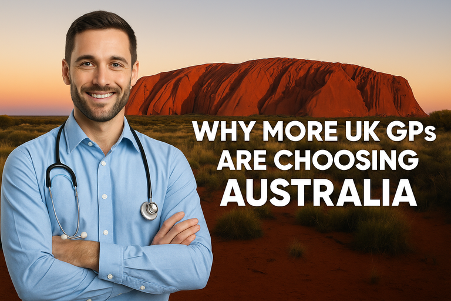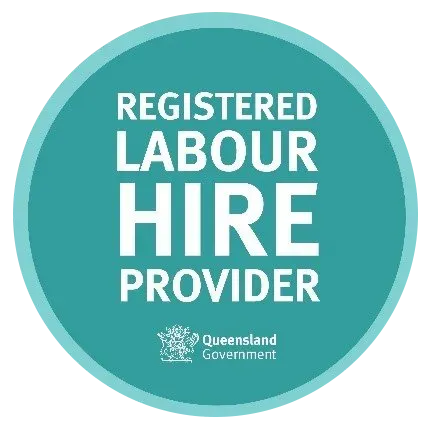Where are the highest paid doctors – Australia or UK?

Where Are the Highest Paid Doctors – Australia or UK
Australia has always attracted doctors from around the world, especially the from the UK, and for good reason. The major attraction, apart from the beautiful weather, people and lifestyle has been income – Australia offers the highest paid doctors roles for UK doctors. Depending on seniority, British doctors can earn as much as 50% more in places like Sydney and Brisbane. In addition, Australia opened its doors to foreign doctors because of the shortage of health professionals, especially in remote and rural areas. Have a look here for our current job offers!
Earnings can be significantly higher compared with the average earnings in UK and Ireland. Plus, if you have general registration with AHPRA and an eligible visa, you can earn extra high rates by working locum jobs across Australia. And unlike the UK and Ireland, about 70% of healthcare costs in Australia is provided by the government. To increase healthcare access to many, Australia provides two national subsidy schemes – Medicare and the Pharmaceutical Benefit Scheme.
Earnings can be uncapped
Most GP’s in Australia work as contractors which means that you pay your own tax and you are responsible for your sick pay and pension arrangements. Payments are usually in the form of percentage of billings which are usually between 60 – 70%. Since earnings will depend on gross income generated, it is difficult to put a cap on the amount you will possibly earn practicing in Australia. In a busy practice, daily billings can reach $2000 per day within just a few months of practice..
Flexible Billing can improve earnings
GPs in Australia can pretty much control the way they bill and the number of patients they see. Income depends on the number of patients seen and how they are billed. Bulk billing allows the practice to charge the patient a scheduled fee, based on consult time and extra if any procedures are involved and then claim payments directly from Medicare. GPs can also choose to private bill patients (cash) for services while the patient recovers a minimum consult charge from Medicare. Both methods can be combined into a mixed billing system which can be a great way to improve earnings and ensure you are one of the highest paid doctors. Check out our article on how to build your GP patient base as well!
Comparison of average earnings in Australia based on position.
| Position | Average Income in AU$ | Average Income plus overtime in AU$ |
| Consultant / Specialist | 175,000 – 350,000 | 200,000 – 400,000 |
| General Practitioner | 200,000 – 350,000 | 250,000 – 400,000 |
| Registrar | 75,000 – 110,000 | 90,000 – 130,000 |
| Resident | 60,000 – 75,000 | 70,000 – 90,000 |
Earnings in Britain and Ireland
Even though GPs in Britain can increase the number of patients and expand services to increase income, earnings remain relatively fixed. Private medical work is usually limited to peripheral services. Another major issue is that there is no funding available for individual consultations, resulting in a lack of motivation for a GP to increase the number of appointments. The case in Ireland is also similar as the Health Service Executive (HSE) has stopped paying Non-consultant hospital doctors (NCHDs) for unscheduled overtime hours in some hospitals across Ireland.
It is a different situation in Australia when the sources of earning are considered. By expanding services and increasing the number of patients seen, income will increase. This increased income means there is motivation for GPs to work longer hours and see more patients which all leads to the highest paid doctors being in Australia.
Overtime pays well in Australia
Hospital Doctors in Australia are paid overtime when they work more than their 38-hour week, including weekends, public holidays and night shifts. This allows them to earn as much as double the standard earning rate. In practice, salaries can become 15-25% higher with overtime and on-call hours. GPs can also increase their earning through after hours emergency department cover, after hours private clinics and home visits. This can offer earning between 80 -100% supplemented income. You’ve heard enough? Register your details here to get a roadmap that suits you!
Taxes for the Highest Paid Doctors
One major difference between the UK and Australia is in the area of tax deductions. Doctors working in Australia, can save as much as 15-20% off their UK tax bill. As a contractor, ABN/ACN holder, you can pay as little as 30% tax on gross earnings, less if you have a good accountant. The system can allow you to reduce your taxable income by expending some of your pre-tax income on items like petrol, mortgage or rent, computers, household utility bills and cars. This can mean paying between £30,000 to £40,000 less tax. The low rate of tax compared to the UK and Ireland makes it a great place to ensure you also are one of the highest paid doctors!
Below is the 2018-2019 income tax rate in Australia (AUD)
Cost of Living
When deciding on where to work, it is not only average earnings that can help you make an informed choice. The cost of living is also an important factor to consider. The cost of living depends on location. A place like Perth in Australia is 12% cheaper to live in compared with a similar place in London. The cost of living in some other locations in UK can however be cheaper when compared with Australia.
Benefits for the family in Australia
One major upside of working in Australia is the low unemployment rate – one of the lowest in the world. This means your partner will have no problem finding a suitable job. If you have a partner, migrating to Australia should not cause you any major concerns. Read Andrew’s story here – he is one of our doctors who moved to Australia from the UK together with his family. He’s been very happy with his choice and loves Australia!
Does Money buy happiness?
We all know that money doesn’t necessarily buy happiness, but maximising the return you earn for your hard earned education and medical experience is rewarding in itself. Putting different factors into consideration – including earnings, tax, and healthcare funding – Australia remains the best destination for doctors looking to explore a new adventure in their practice, earn as much as possible and live a great lifestyle. Once you’ve got the appropriate registration, you’ll also be able to do locum work in Australia. It’s a great way to explore the country, and you can even make it a family adventure!
Register now to get updates on the highest paid doctors positions in Australia! Or check out our current vacancies across Australia!









